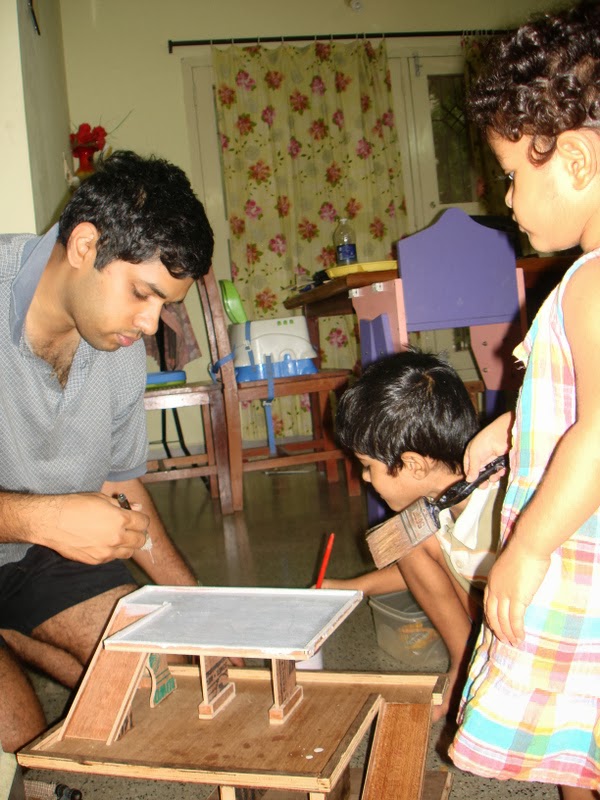One of the joys of being involved in woodworking is that one can make toys for one's kids. One can actually say "Do you want me to make something like that for you?" However after making (and not making) toys for my kids, here are some valuable lessons I have learnt.
Get them involved
When a kid is involved in making his or her own toy, it really makes them proud. Small things like applying glue, sanding, inserting a nut and bolt, or painting their own toys can get them involved so that they can also say " I also helped". Children can also help in design. The toys will look crazy, but the kids will love it.
Make it fast and now
Very often I have postponed making things that my kids asked for as I was looking to make things perfectly. I wanted the best design etc etc which finally made me think the toy was too difficult. Sometimes I have made things slowly and steadily at my own pace that frustrated the kids. Kids like things now and soon. A ten minute toy though crude is probably an equal source of joy to a kid as compared to a 10 hour well crafted toy.
Leave room for imagination.
I made guns for my son. He liked them. However he was equally happy picking up a waste piece of wood with a funny shape and pretending it was a fancier gun. While the hobbyist in me would like to make a scale model, with great detail, for a kid that may not matter. Leaving room for imagination is a win-win situation for both. Toys are easier to make and are delivered quicker.
Repair fast
A cracked tea cup, a broken wheel, a loose screw... Somehow it is easier to make things than to repair things. Repair is boring, but has to be done. The faster the better. I have a lot of toys and books awaiting repair, and I think it would be great for kid to know that even if it is broken, dad can repair it. I like the slogan of "quickfix" : Repairs everything except broken hearts.
One at a time
If you give a child two toys, the chances are he will like one more. This also means he will like one less, and you ave automatically decreased the worth of one toy, just by clubbing it with a one he likes better. This happens with books, cds etc, children choose their favorites. So once again if one spaces out the toys one makes, a child can enjoy each toy individually.
Incrementally change old toys
When children grow tired of an old toy, you can increase interest in them buy adding additional features. An extra room on a garage, a new engine for a train, a new station, a level crossing, a new animal to a farm, a new gun on a tank, a new button on a gun etc can interest them again. Rather than build a complicated set at once, adding to a set over time can increase the fun a child gets out of a toy.
Let toys be misused.
If you build a tank, with moving tracks and a turret, be prepared for it to be used as a plane, a bomb etc. Often the hobbyist in us would like the wheels we have fixed to be used as wheels. But as long as a child uses a toy and gains fun out of it, I suppose one must let boys be boys.
An interesting bit of reading is regarding a
1981 lego ad
 |
| A motorbike made from scrap wood. Designed by my six year old son. Took about 10 minutes to build. |
 |
| A tank made with scrap wood, and left over trundle wheels. Desinged by me. It took about 10 minutes to make. Crude but leaves room for imagination |







.jpg)




















